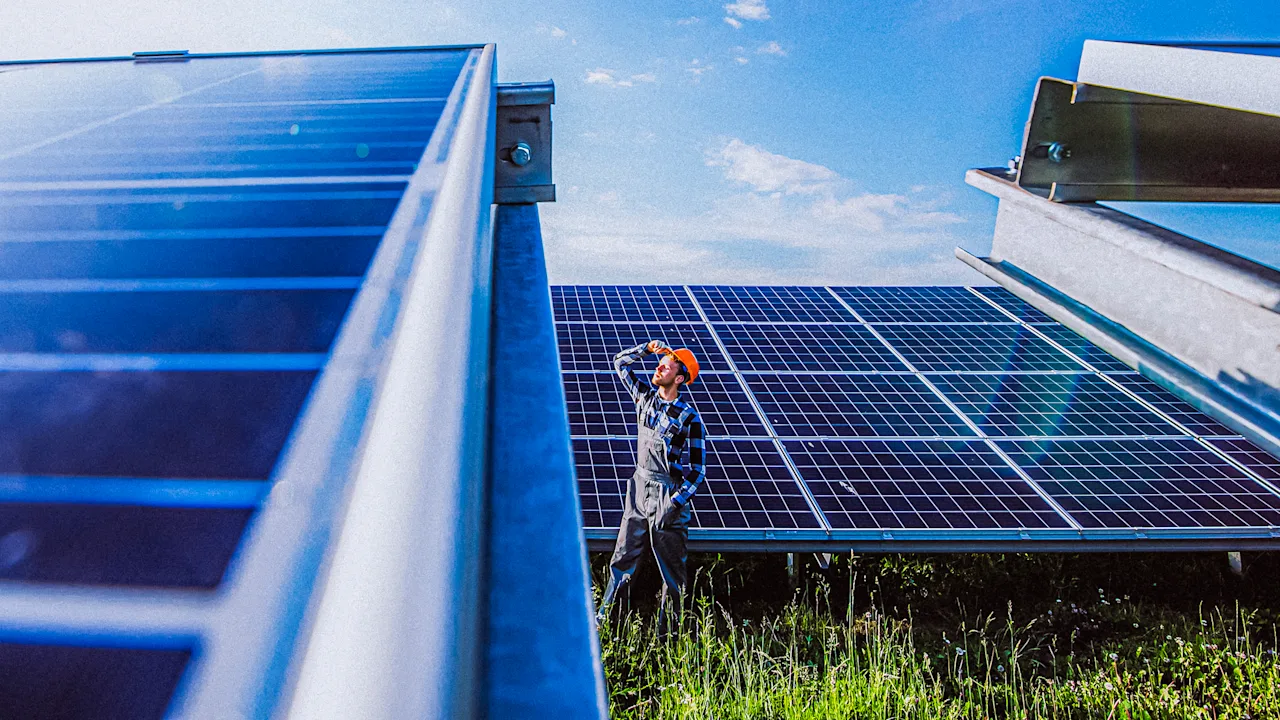Where solar investments pack the biggest climate punch

The United States’ hourly demand for electricity broke two records last month, reaching its highest-ever level—759,190 megawatts—on July 29. The Energy Information Administration (EIA) expects demand to keep rising, especially in states with expanding data center and manufacturing industries, such as Texas and Virginia.
Most of this demand will continue to be met by nonrenewable sources, primarily fossil fuels, which accounted for 91% of U.S. energy consumption in 2023. Still, solar consumption has steadily increased over the past 35 years, according to the EIA, and new research suggests boosting solar use could significantly reduce carbon emissions.
A new study published in Science Advances found that increasing solar generation by 15% nationwide could lower annual carbon dioxide (CO2) emissions by 8.54 million metric tons, though the benefits vary by region. To identify where the climate impact would be greatest, researchers mapped the effects of expanding solar production.
“Our ambitious goal is to highlight that, first of all, there is a big advantage in investing in solar,” Arpita Biswas, lead author of the study and a computer science professor at Rutgers University, tells Fast Company. “And this paper shows where the strategic investment could be.”
The work behind the paper began after Biswas, then working as a postdoctoral researcher at the Harvard School of Public Health, noticed a lack of research quantifying exactly how much CO2 emissions might decrease if more solar energy were generated.
To close that research gap, the team built a statistical model analyzing EIA generation data from 2018 to 2023. The model projected how adding solar—such as utility-scale solar farms—would affect regional CO2 emissions, and how increases in one region could influence emissions in neighboring ones.
The findings show that even modest increases in solar output significantly reduced emissions in places such as California, Florida, Texas, and states in the mid-Atlantic and Southwest. Biswas describes these areas as “well placed” for solar, thanks to abundant sunshine and, in some cases, strong incentives for adoption.
In contrast, regions such as New England and the central U.S. saw little effect on CO2 emissions, even with large increases in solar capacity. However, proximity to high-potential regions still offered indirect benefits, as exported solar reduced emissions next door.
“For example, if you increase solar in California by something like 15%, it actually has some effect in decreasing carbon dioxide emissions in the Northwest and Southwest regions,” Biswas says. “Investing in regions that are getting a good amount of solar generation capacity not only helps that region, but also all the other neighboring regions where that energy gets exported.”
The researchers hope their data will guide policymakers and stakeholders toward more strategic solar investments—and inspire communities to make personal ones.
“If they want to use their own solar mini-grid for cost-cutting, there have been a lot of studies about how to use those to [reduce costs] . . . and they can also sometimes sell the excess energy,” Biswas says. “It makes it a win-win situation.”
What's Your Reaction?
 Like
0
Like
0
 Dislike
0
Dislike
0
 Love
0
Love
0
 Funny
0
Funny
0
 Angry
0
Angry
0
 Sad
0
Sad
0
 Wow
0
Wow
0































































































